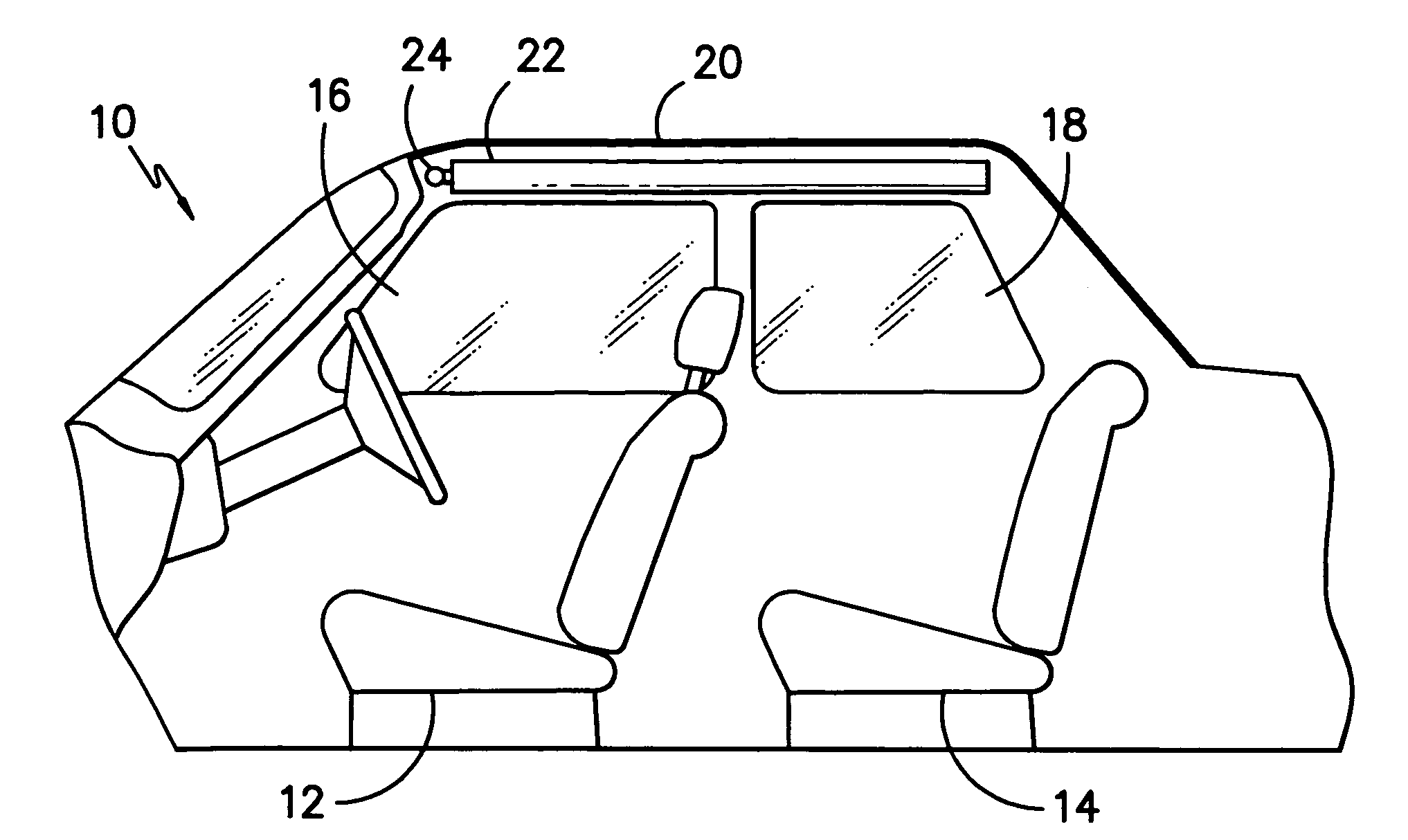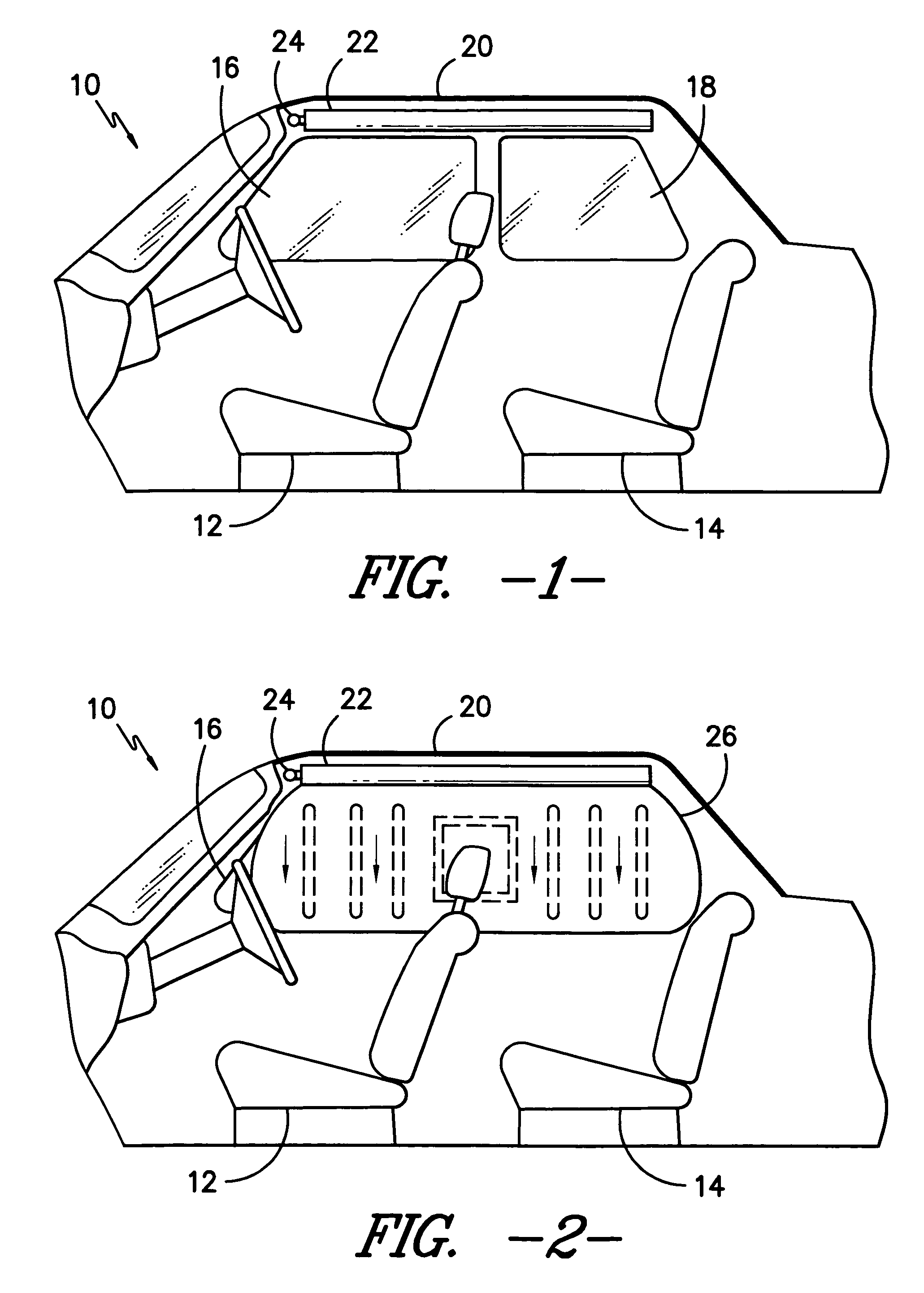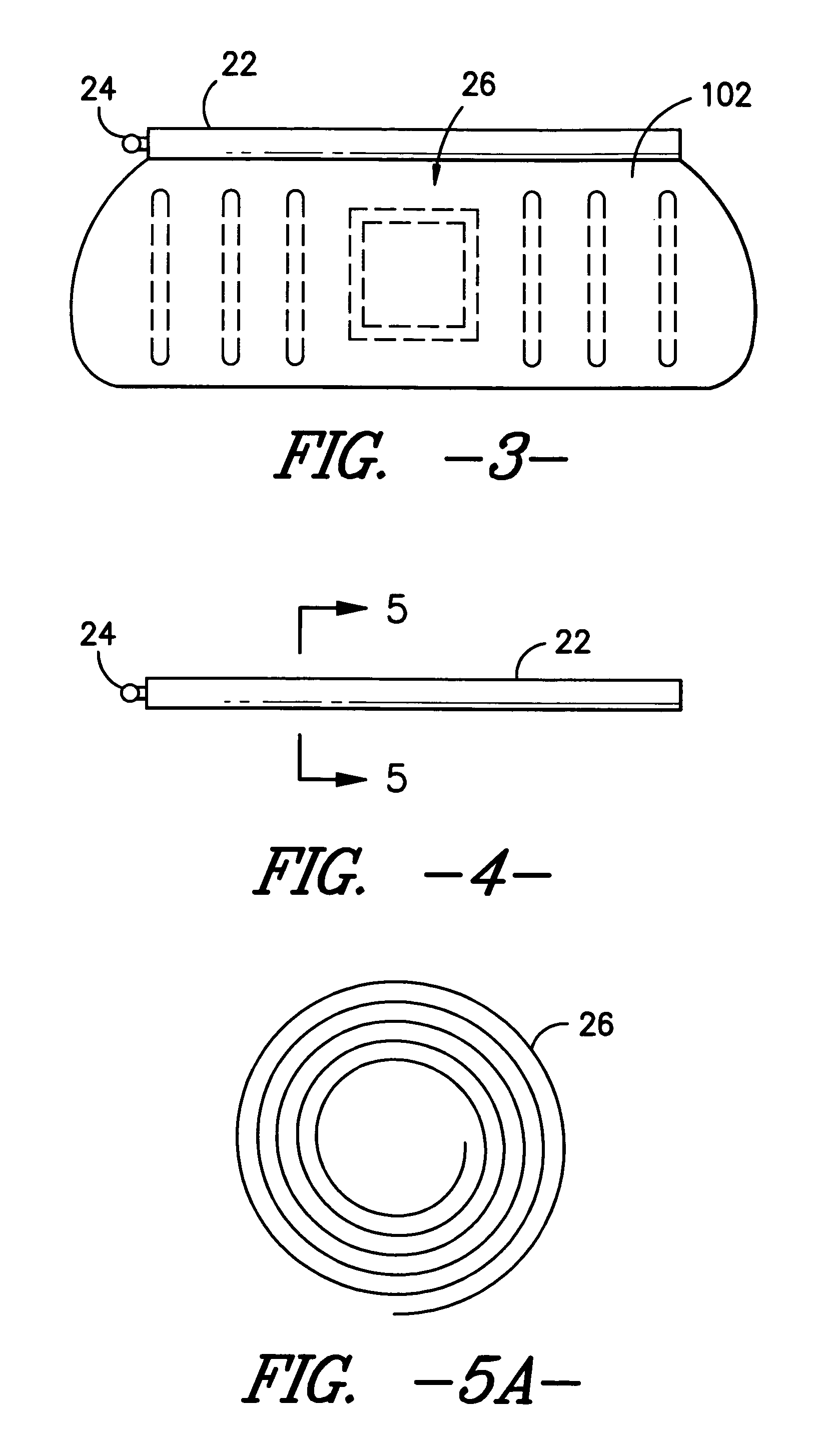Fabrics, airbags and methods
a fabric and airbag technology, applied in the direction of weaving, pedestrian/occupant safety arrangement, vehicular safety arrangments, etc., can solve the problems of high add-on weight, difficult packing within small airbag modules, and difficult to achieve the effect of puncture resistance, high toughness, and high abrasion resistan
- Summary
- Abstract
- Description
- Claims
- Application Information
AI Technical Summary
Benefits of technology
Problems solved by technology
Method used
Image
Examples
example
[0098]First, an adhesive primer formulation was produced having the composition:
[0099]
ComponentParts by weightDesmoderm ® 43195 (Bayer Corporaiton,25 gramspolyurethane resin)Dimethylformamide (Aldrich, solvent)75 gramsDesmodur ® CB-75N (Bayer, polyisocyanate 4 gramsadhesion promoter)
[0100]This primer coating was applied to both sides of a 2.5 liter size Jacquard woven nylon airbag (of 440 denier fibers), made in accordance with the Figures and preferred embodiments within U.S. patent application Ser. No. 09 / 406,264, to Sollars, Jr., previously incorporated by reference. The primer coating was dried at about 160° C. for about 2 minutes to obtain a dry coating weight of about 0.25 ounces per square yard on each side. Subsequently, a 2 mil thick polyurethane film (Dureflex™ PT9400) was then laminated on both sides of the primer coated airbag utilizing a hotpress providing about 80 psi press pressure at about 188° C. with a residence time of about 1 minute. The total polyurethane film a...
PUM
| Property | Measurement | Unit |
|---|---|---|
| thick | aaaaa | aaaaa |
| elongation | aaaaa | aaaaa |
| tensile strength | aaaaa | aaaaa |
Abstract
Description
Claims
Application Information
 Login to View More
Login to View More - R&D
- Intellectual Property
- Life Sciences
- Materials
- Tech Scout
- Unparalleled Data Quality
- Higher Quality Content
- 60% Fewer Hallucinations
Browse by: Latest US Patents, China's latest patents, Technical Efficacy Thesaurus, Application Domain, Technology Topic, Popular Technical Reports.
© 2025 PatSnap. All rights reserved.Legal|Privacy policy|Modern Slavery Act Transparency Statement|Sitemap|About US| Contact US: help@patsnap.com



